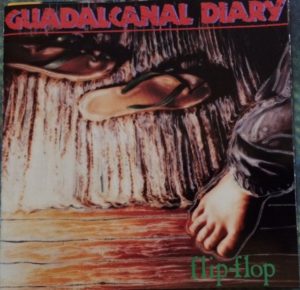Honestly, this one’s pretty hard to write up.
Why Finally? “You’ve never seen this movie?!” someone with a wide-ranging Apple movie collection said—and off we went.
People, I had barely heard of Streets of Fire. Movie-wise, I spent 1984 watching The Secret of NIMH repeatedly on cable (while begging to be allowed to watch Flashdance), getting the bejeezus scared out of me at Gremlins, laughing at Ghostbusters and, sadly, not watching The Adventures of Buckaroo Banzai Across the Eighth Dimension.
(In that last case, as the man in a later movie said, I chose… poorly.)
Here is what I knew about Streets of Fire before last weekend:
This video. That’s it.
The Premise: When hometown girl turned rock star Ellen Aim (Diane Lane) is kidnapped from the stage by weird bikers (led by Willem Dafoe as “Raven”), old flame/current mercenary Tom Cody (Michael Paré) is called upon to rescue her. Which he does in spectacular fashion—for the ’80s, that is, back when less stuff exploded—thanks to the help of a fellow ex-soldier (Amy Madigan in what may be my favorite role in the film). Also along for the ride is Ellen’s current squeeze, music manager Billy Fish (Rick Moranis).
Streets of Fire calls itself a “rock ‘n’ roll fable,” which is a nice clue that things aren’t always going to make sense. The setting, for example, seems to be simultaneously the 1950s and the 1980s, with spandex pants and punky makeup for performers, but greasers all over the place like it’s set in a Stephen King town. I recall a lot of people in the ’80s complaining that TV and movies were becoming like music videos, and I bet this was held up (down?) as an early example. The story itself is about an inch deep, but evokes so many of the Classic Plots that it has the appeal of a fairy tale.
The Verdict: On one hand, I used the word “delightful” about five times during viewing, and I really enjoyed Streets of Fire. That may be less about the movie itself, though, and more about its resemblance to other works of its time. It has an underdog-mercenary plot like Extreme Prejudice or The A-Team, the random serendipity of the Buckaroo Banzai movie, a neo-retro underbelly like Blue Velvet (and two years before Blue Velvet came out, too), and, heaven help me, the good-will-prevail attitude that is the only thing I like about classic clunker Megaforce.
It also has, at most, 1.5 actual streets of fire.
Even though I found it delightful, I can imagine the film having a lot of haters: the loner-with-a-heart-of-gold hero, for one thing, is a trope that should be using a rollator to get around by now. Had Streets of Fire been one whit more realistic, I think it would have sunk like a stone.
Might go well with: I mentioned so many movies above that I’ve got nothing but popcorn for this one.
Next time: In the Quest For Monday, Race tours the facilities.
